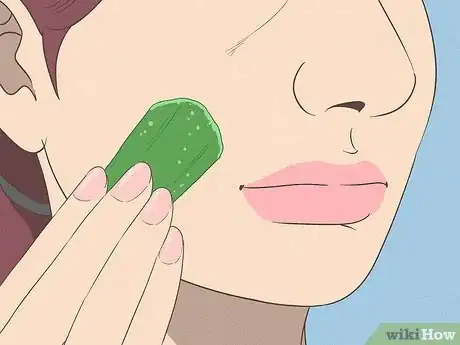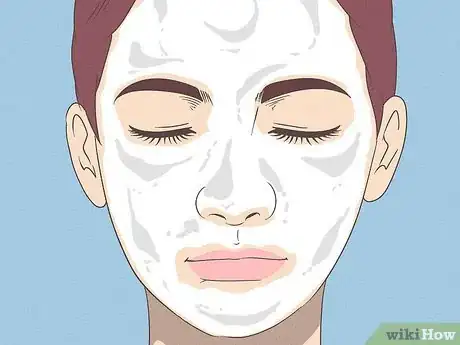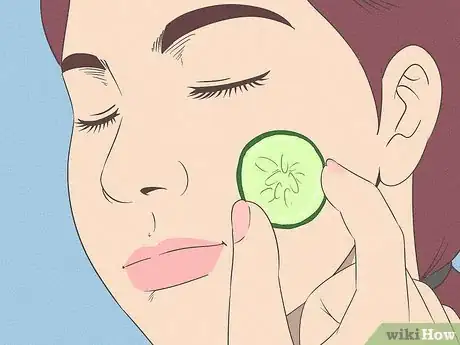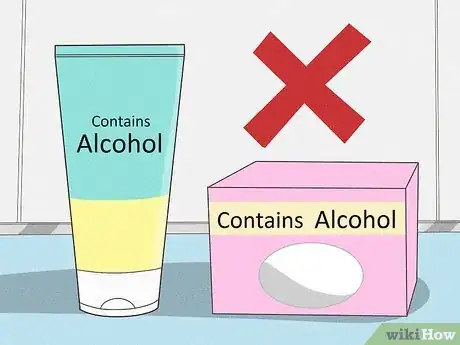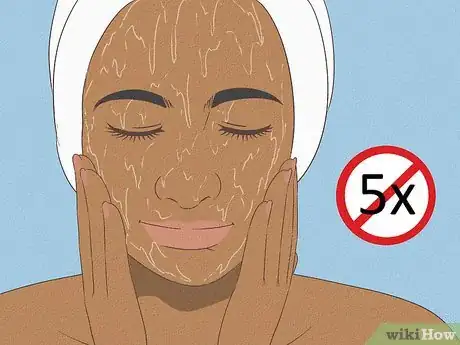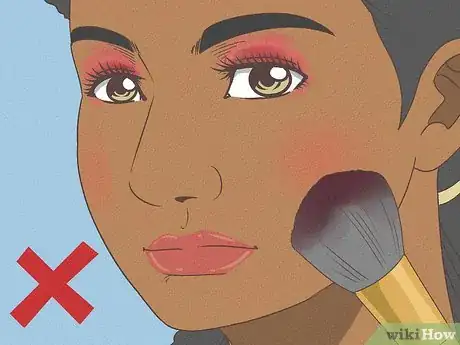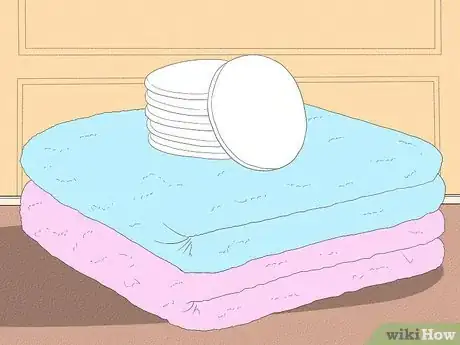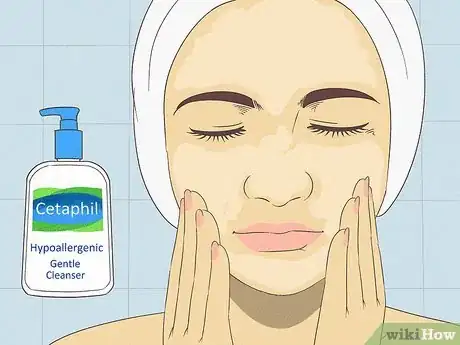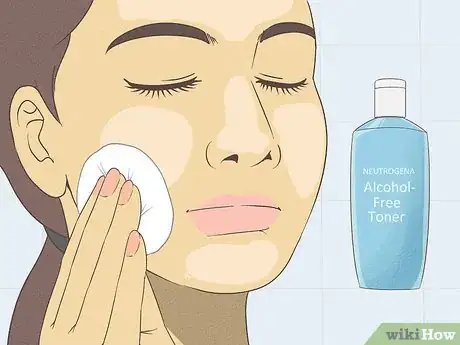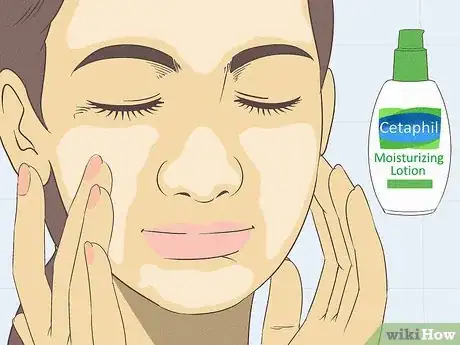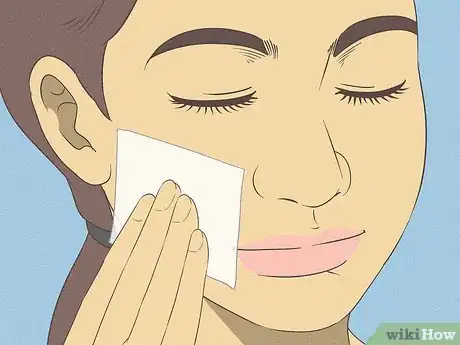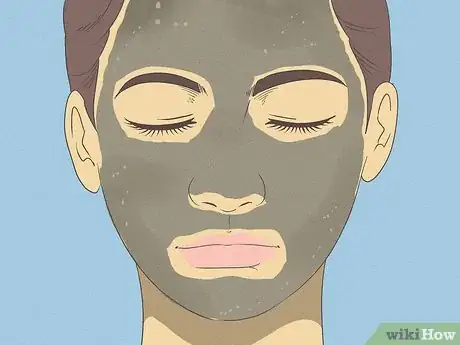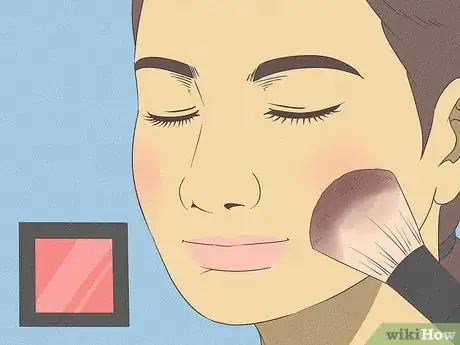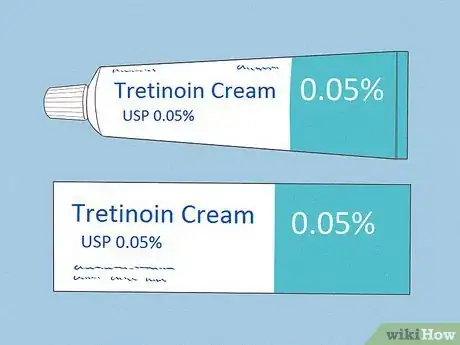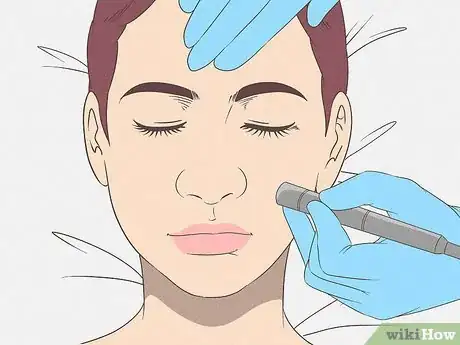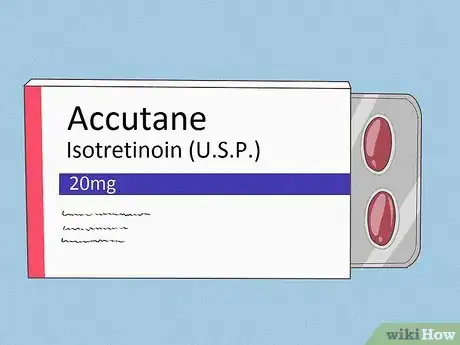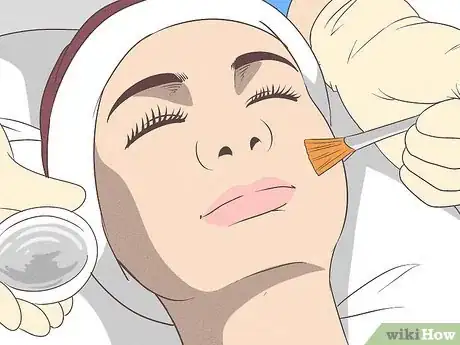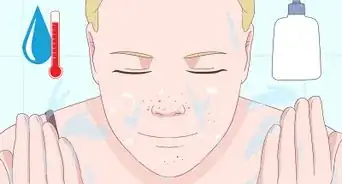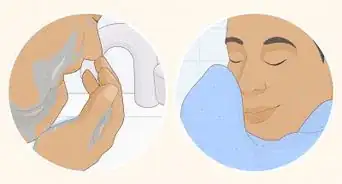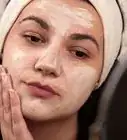This article was co-authored by Diana Yerkes. Diana Yerkes is a Skincare Professional and the Lead Esthetician at Rescue Spa in New York City, New York. With over 15 years of experience, Diana helps others with their skin care needs by incorporating natural and high-performing products and treatments into their routines while providing nutrition insights and educating clients on better skin care habits. Diana is a member of the Associated Skin Care Professionals (ASCP) and holds certifications from the Wellness for Cancer and Look Good Feel Better programs. She received her esthetics education from the Aveda Institute, the International Dermal Institute, and the Biologique Research Academy.
wikiHow marks an article as reader-approved once it receives enough positive feedback. In this case, 80% of readers who voted found the article helpful, earning it our reader-approved status.
This article has been viewed 1,035,521 times.
Although the oil on our skin helps protect it and fight signs of aging, many people suffer from an excess of oil. We often picture teenagers having this problem, but it can affect people of all ages and cause blemishes, pimples, and other problems. There are a variety of treatments you can do at home and under a doctor's supervision to help fight an excess of oil on your face.
Steps
Treating Oily Skin with Home Remedies
-
1Apply aloe vera to your face. The aloe vera plant has many therapeutic properties, including treating burns, cuts, and infections. It is also effective on oily skin and acne.
- Cut an aloe leaf in half and squeeze out the gel.
- Apply the gel evenly over your face.
- Allow the gel to dry. After it dries, rinse it off with cool water.
- This can be repeated two or three times a day.
-
2Apply yogurt to your face. Yogurt helps open up pores, exfoliate the skin, and absorb excess oil.
- Take one tablespoon of plain yogurt and spread it evenly over your face.
- Leave the yogurt on for 15 minutes, then rinse off with cold water.
- Repeat once a day.
Advertisement -
3Rub cucumbers on your face. Cucumbers are often applied during facials and spa treatments because of their soothing properties. They contain vitamins and minerals that can help fight swelling, redness, and excess oil.
- Slice up a fresh cucumber and rub the slices on your face.
- Leave this on your face overnight, rinsing with warm water in the morning.
- Repeat daily.
Avoiding Triggers
-
1Avoid harsh soaps and creams. Any products containing alcohol or other harsh chemicals can irritate your face. This irritation could lead to more oil production and make the problem worse.
-
2Avoid over-washing your face. Though you may think that the more you wash your face the better, this is not the case. Like with harsh chemicals, excessive washing will lead to irritation and can make your symptoms worse. You should wash your face no more than two times daily.
-
3Stop using heavy cosmetics. These products can clog your pores, which will trap oil and dirt in the skin and make acne symptoms worse.
-
4Change any towels or pads you use on your face every day. Oil, dirt, and bacteria get trapped on these products and you can then spread them all over your face.
Treating Oily Skin with Topical Products
-
1Use a gentle facial cleanser twice a day. Most dermatologists agree that cleansing the skin is the best way to reduce oil.[1] Make sure to use a gentle, pH balanced cleanser rather than regular soap. Most soaps are highly alkaline and strip the natural acid mantle from the skin leaving it vulnerable to bacteria.
- Products containing benzoyl peroxide, salicylic acid, glycolic acid, or beta-hydroxy acid are often considered best. These are slightly acidic, however, so start off with only a small amount to make sure your skin doesn't have an adverse reaction.
- When washing your face, make sure you use warm water, not hot. Hot water can further irritate the skin.[2]
-
2Use a toner free of alcohol or acetone. Place a few drops on a clean, natural cotton pad and wipe it gently over the affected area. Toners can be harsh on skin, so dermatologists often recommend only using them on oily parts of your face rather than the whole face.[3]
-
3Moisturize your skin. While it may seem counterproductive, oil and moisture are two different things. Even oily skin can be dehydrated and requires moisturizer to stay healthy. Make sure to use a light, oil-free moisturizer.[4]
-
4Use blotting papers. This is a quick, effective solution to soak up excess oil. They won't cut down on your skin's oil production though, so this treatment should be paired with a cleansing regimen for the best results.
- Make sure you don't rub your skin with blotting papers. This can spread dirt and cause irritation. Instead, just gently press the paper down on your skin and hold it there for 15 to 20 seconds.[5]
-
5Use a clay mask. Masks help draw out dirt and oil, keeping pores clean. These products can also dry out the skin, however, so make sure you don't overuse them. Once a week should be the maximum usage.[6]
-
6Apply an oil-free, mineral powder makeup base for the daytime. Use powder blush rather than cream blush and powder eye shadows rather than cream eye shadows. A dusting of a translucent powder can be applied two or three times during the day after blotting the face with a tissue to remove any excess oil.
Treating Oily Skin Medically
-
1Visit your dermatologist. OTC treatments may not work for everyone, and you might need something stronger. Talk to your dermatologist and explain your symptoms and what you've already tried. She can then recommend a variety of other treatments for you.
-
2Use prescription-strength topical treatments. If OTC topicals aren't helping your oily skin, stronger treatments are available by prescription. These creams usually contain tretinoin, adapalene, or tazarotene, and work by shrinking pores and reducing oil production.[7]
- Be sure to follow all instructions when using prescription creams. Used improperly, they can further irritate your skin.
-
3Try a laser treatment. Lasers can be used to shrink pores and reduce oil production.[8]
-
4Take Accutane. This is a prescription oral medication. It works by shrinking the oil glands, cutting the production of sebum. It is most often prescribed to treat serious acne that does not respond to other treatments.[9]
-
5Try a chemical peel. With this treatment, a chemical is applied to the face that removes the top layer of skin. It is used to treat wrinkles, sun damage, and some forms of acne.[10]
Expert Q&A
-
QuestionWhat's the best treatment for oily skin?
 Diana YerkesDiana Yerkes is a Skincare Professional and the Lead Esthetician at Rescue Spa in New York City, New York. With over 15 years of experience, Diana helps others with their skin care needs by incorporating natural and high-performing products and treatments into their routines while providing nutrition insights and educating clients on better skin care habits. Diana is a member of the Associated Skin Care Professionals (ASCP) and holds certifications from the Wellness for Cancer and Look Good Feel Better programs. She received her esthetics education from the Aveda Institute, the International Dermal Institute, and the Biologique Research Academy.
Diana YerkesDiana Yerkes is a Skincare Professional and the Lead Esthetician at Rescue Spa in New York City, New York. With over 15 years of experience, Diana helps others with their skin care needs by incorporating natural and high-performing products and treatments into their routines while providing nutrition insights and educating clients on better skin care habits. Diana is a member of the Associated Skin Care Professionals (ASCP) and holds certifications from the Wellness for Cancer and Look Good Feel Better programs. She received her esthetics education from the Aveda Institute, the International Dermal Institute, and the Biologique Research Academy.
Skincare Professional Look for a water-based moisturizer that contains hyaluronic acid, which is great for oily skin. When you skip moisturizer, your skin actually overcompensates and produces more oil.
Look for a water-based moisturizer that contains hyaluronic acid, which is great for oily skin. When you skip moisturizer, your skin actually overcompensates and produces more oil. -
QuestionIs cream cleanser good for oily skin?
 Megan16Community AnswerCream cleanser usually leaves an oily residue that is nourishing for dry skin, but may worsen oily skin. Facial wash may be a better choice.
Megan16Community AnswerCream cleanser usually leaves an oily residue that is nourishing for dry skin, but may worsen oily skin. Facial wash may be a better choice. -
QuestionWhat should I use for my oily skin?
 Community AnswerRevolution's Oil Control Spray is effective and affordable.
Community AnswerRevolution's Oil Control Spray is effective and affordable.
Warnings
- Don't try to remove all the oil from your face. The oil is there to protect the skin. Stripping it all away can damage your skin and even cause signs of premature aging.⧼thumbs_response⧽
- Make sure you investigate any products or treatments before putting them on your face. Everyone's skin is different, and what works for someone may irritate someone else.⧼thumbs_response⧽
- Carefully follow instructions for topical treatments. Many products are effective in the right dosage, but harmful if applied too much.⧼thumbs_response⧽
References
- ↑ http://www.webmd.com/skin-problems-and-treatments/acne/features/oily-skin
- ↑ http://www.webmd.com/skin-problems-and-treatments/acne/features/oily-skin
- ↑ http://www.webmd.com/skin-problems-and-treatments/acne/features/oily-skin
- ↑ http://www.webmd.com/skin-problems-and-treatments/acne/features/oily-skin
- ↑ http://www.webmd.com/skin-problems-and-treatments/acne/features/oily-skin?page=2
- ↑ http://www.webmd.com/skin-problems-and-treatments/acne/features/oily-skin?page=2
- ↑ http://www.webmd.com/skin-problems-and-treatments/acne/features/oily-skin?page=3
- ↑ https://www.dermquest.com/expert-opinions/surgery-and-cosmetics/2012/treatment-options-for-oily-skin/
- ↑ http://www.drugs.com/accutane.html
About This Article
You can cure your oily skin by keeping a good skincare routine and using products designed for oily skin. Wash your face with warm water and a gentle facial cleanser twice a day. After washing your face, use an oil-free moisturizer to keep your skin hydrated. This might seem counter-intuitive, but moisturizing your skin actually prevents it from overproducing oil. You can also place a few drops of an alcohol-free toner onto a cotton pad and dab it on the oily parts of your face. Additionally, apply a clay mask once a week, which will help draw out any excess oil from your pores. For more tips from our Beauty co-author, including how to choose the best makeup products for oily skin, read on!
